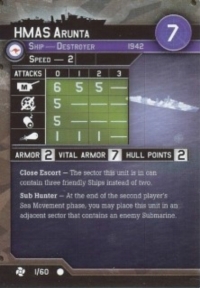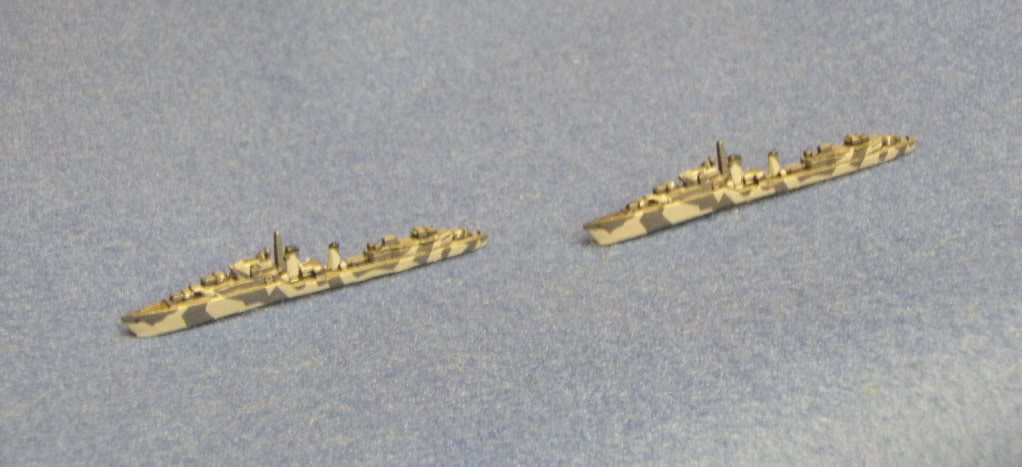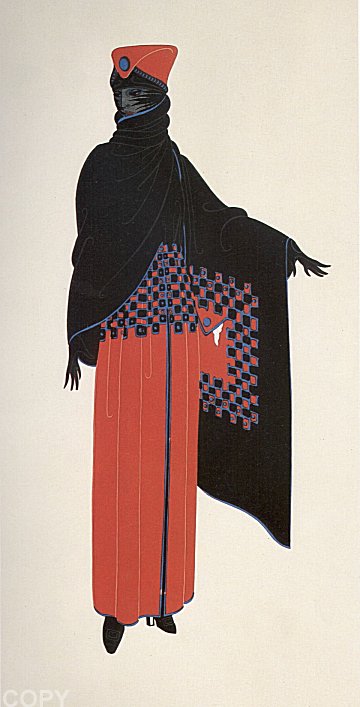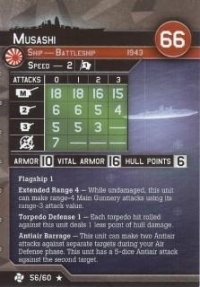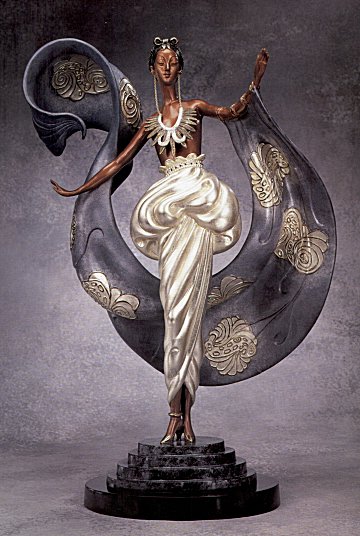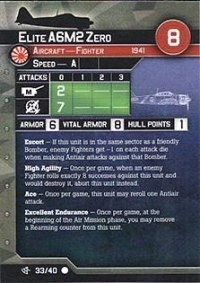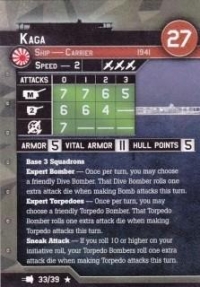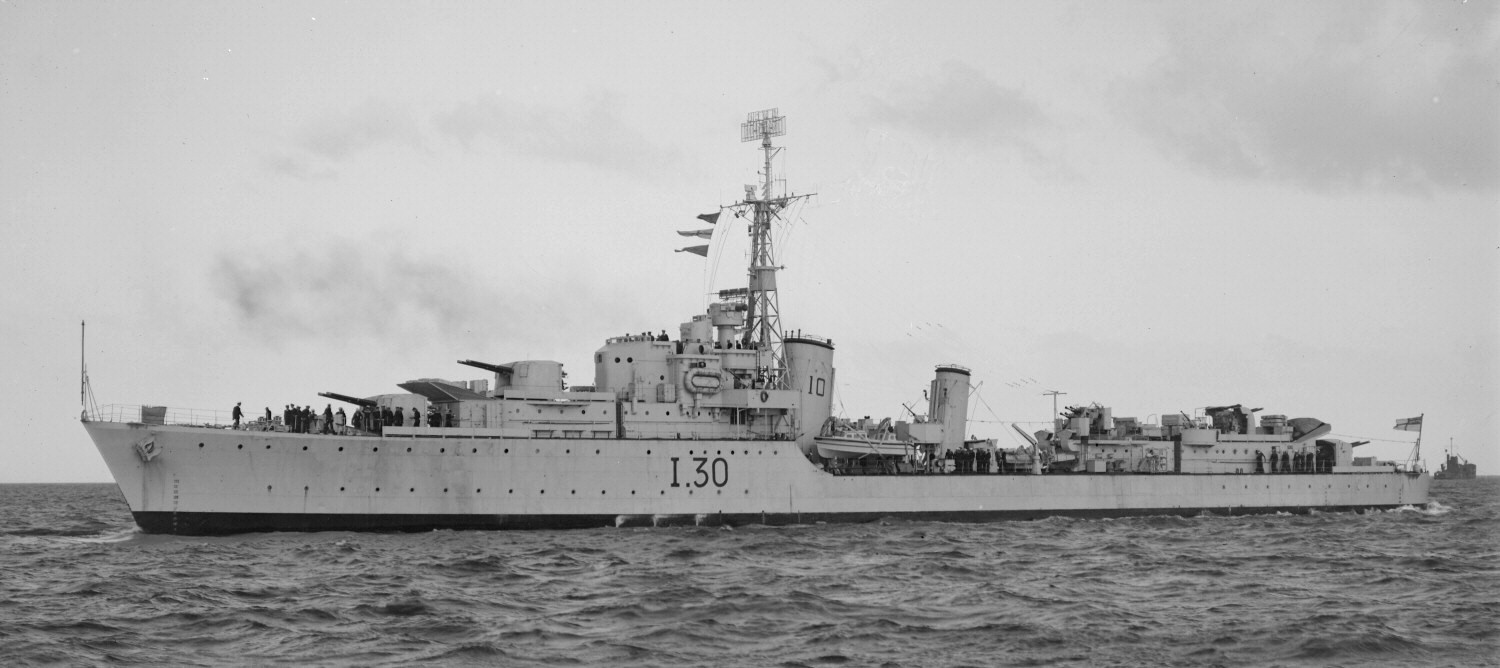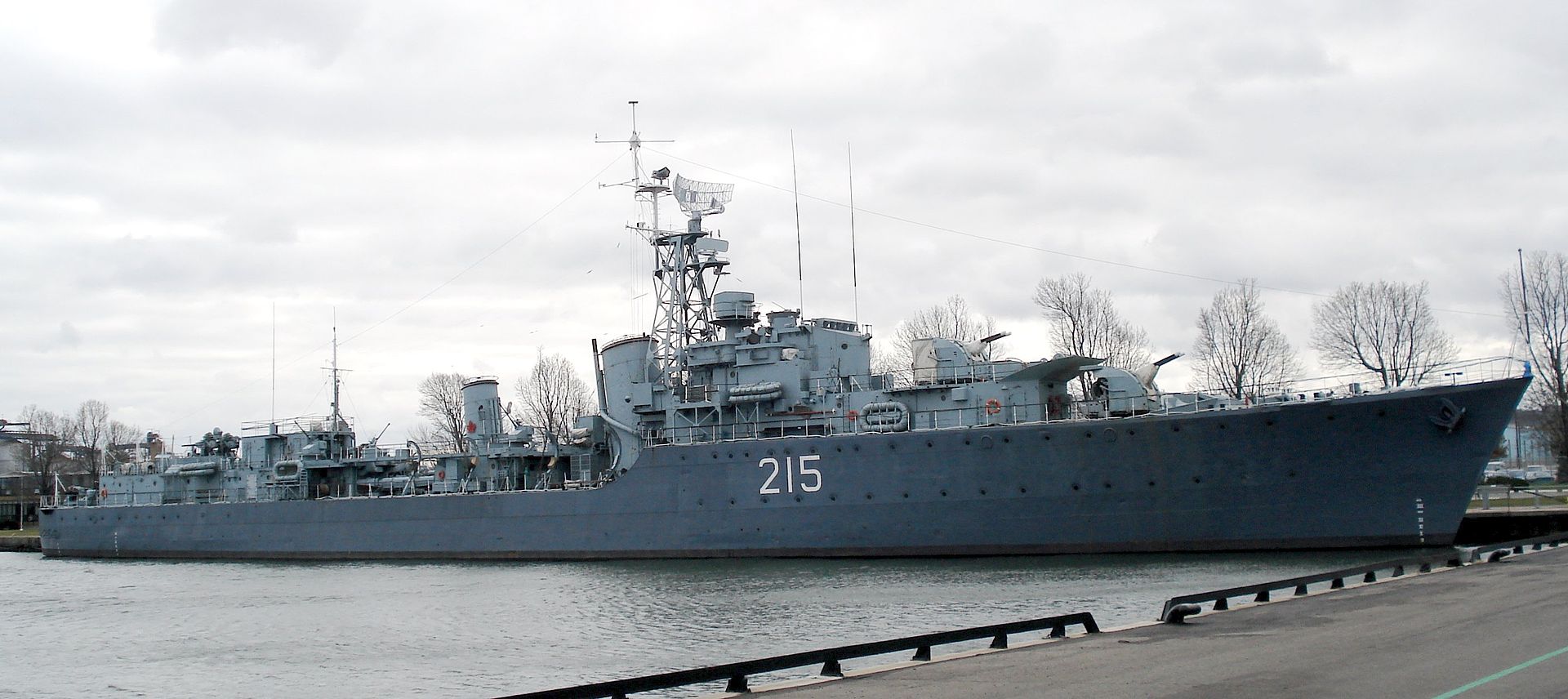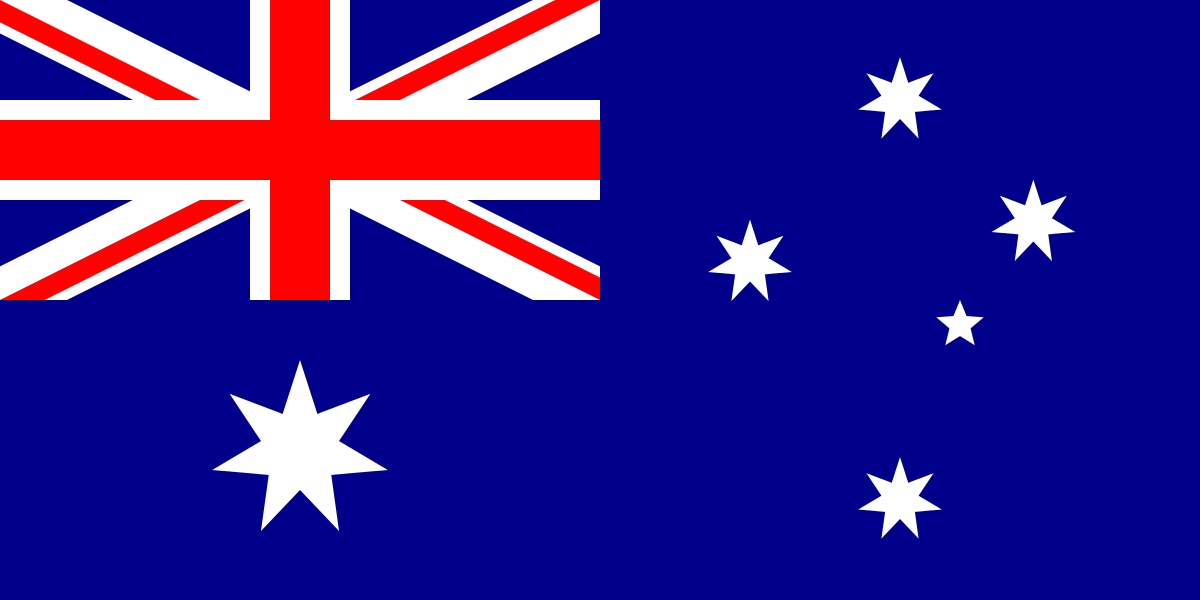Prototype: HMAS Arunta (I30/D5/D130) was a Tribal-class destroyer of the Royal Australian Navy (RAN). Named for the Arrernte Aborigines, the destroyer was laid down in 1939 and commissioned into the RAN in 1942.
Arunta fought during the second half of World War II; initially as a convoy escort and patrol ship, then in the shore bombardment and amphibious landing support roles while attached to the United States 7th Fleet. During the war, she was responsible for sinking Japanese submarine RO-33 off Port Moresby on 24 August 1942, and earned five battle honours (one of which was later rescinded). After the war's end, Arunta underwent two deployments to Japan as part of the British Commonwealth Occupation Force.
The ship underwent a lengthy modernisation from 1949 to 1952, and was reclassified as an anti-submarine destroyer. After conversion, Arunta served in Korean waters after the Korean War armistice, and was one of the first Australian warships assigned to the Far East Strategic Reserve.
Arunta was paid off into operational reserve at the end of 1956, where she remained for twelve years. In 1968, the destroyer was sold for scrap, but was never broken up, instead sinking while under tow off Broken Bay on 13 February 1969.
Arunta fought during the second half of World War II; initially as a convoy escort and patrol ship, then in the shore bombardment and amphibious landing support roles while attached to the United States 7th Fleet. During the war, she was responsible for sinking Japanese submarine RO-33 off Port Moresby on 24 August 1942, and earned five battle honours (one of which was later rescinded). After the war's end, Arunta underwent two deployments to Japan as part of the British Commonwealth Occupation Force.
The ship underwent a lengthy modernisation from 1949 to 1952, and was reclassified as an anti-submarine destroyer. After conversion, Arunta served in Korean waters after the Korean War armistice, and was one of the first Australian warships assigned to the Far East Strategic Reserve.
Arunta was paid off into operational reserve at the end of 1956, where she remained for twelve years. In 1968, the destroyer was sold for scrap, but was never broken up, instead sinking while under tow off Broken Bay on 13 February 1969.
Class History: The Tribal class, or Afridi class, were a class of destroyers built for the Royal Navy, Royal Canadian Navy and Royal Australian Navy that saw service in World War II. Originally conceived as a failed design for a light fleet cruiser the Tribals evolved into fast, powerful destroyers, with greater emphasis on guns over torpedoes than previous destroyers, in response to new designs by Japan, Italy, and Germany. The Tribals were well admired by their crews and the public when they were in service due to their power, often becoming symbols of prestige while in service.
As some of the Royal Navy's most modern and powerful escort ships, the Tribal class served with distinction in nearly all theatres of World War II. Only a handful of Royal Navy Tribals survived the war, all of which were subsequently scrapped from hard use, while Commonwealth Tribals continued to serve into the Cold War, serving with distinction in the Korean War. Only one Tribal survives to this day: HMCS Haida, which is now a museum ship in Hamilton Harbour, Ontario, Canada.
As some of the Royal Navy's most modern and powerful escort ships, the Tribal class served with distinction in nearly all theatres of World War II. Only a handful of Royal Navy Tribals survived the war, all of which were subsequently scrapped from hard use, while Commonwealth Tribals continued to serve into the Cold War, serving with distinction in the Korean War. Only one Tribal survives to this day: HMCS Haida, which is now a museum ship in Hamilton Harbour, Ontario, Canada.
Country: Australia is a country and continent surrounded by the Indian and Pacific oceans. Its major cities – Sydney, Brisbane, Melbourne, Perth, Adelaide – are coastal. Its capital, Canberra, is inland. The country is known for its Sydney Opera House, the Great Barrier Reef, a vast interior desert wilderness called the Outback, and unique animal species like kangaroos and duck-billed platypuses.
Item created by: Lethe on 2015-05-31 17:46:30. Last edited by gdm on 2019-08-13 22:18:20
If you see errors or missing data in this entry, please feel free to log in and edit it. Anyone with a Gmail account can log in instantly.
If you see errors or missing data in this entry, please feel free to log in and edit it. Anyone with a Gmail account can log in instantly.


